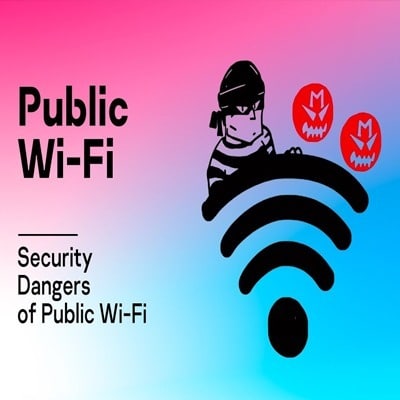
In today’s fast-paced world, convenience sometimes trumps consequences, especially when it comes to how individuals use their mobile devices. Using free public Wi-Fi networks, for example, poses several security hazards, but surveys show that the vast majority of Americans do so anyhow. According to a privatewifi.com survey, three-quarters of participants acknowledged using public Wi-Fi to check their email.
It’s easy to understand how the risk of having your money or bank information stolen. The shame of having your personal information publicly broadcast, outweighs a few minutes of online convenience. People are more afraid of public Wi-Fi networks than public toilet seats, according to a new survey (a promising sign). However, at the 2016 Republican and Democratic National Conventions, an intriguing experiment revealed the participants’ real colors. Guests at each conference were provided with free public Wi-Fi networks provided by private businesses (for social science purposes). On both occasions, over 70% of conference attendees utilized unsecured Wi-Fi networks.
Security consultants frequently use sex as an attention-getting metaphor to pique a client’s interest. When we teach businesses about cybersecurity, we make the connection between the dangers of public Wi-Fi and the dangers of unprotected sex. In any case, neglecting to take the necessary precautions might result in long-term harm. The loss of personal data, such as passwords, financial information, or private photographs or videos, is a kind of digital damage for mobile devices. You’re taking a risk every time you connect to a free network at a coffee shop, hotel lobby, or airline lounge.
Do you think the situation is exaggerated, or that cyber theft is largely a problem for big businesses? Consider the fact that each year, hackers gain access to the personal information of more than half of all Americans. Furthermore, according to Verizon’s annual Data Breach Investigation Report, 89 percent of all cyber assaults have financial or espionage motivations.
Dozens of internet tutorials show hackers how to breach public Wi-Fi networks, some of which have millions of views. “Man in the Middle” is the most popular type of assault. In this basic approach, traffic between a user’s device and the destination is intercepted by tricking the victim’s device into thinking the hacker’s computer is the internet access point. The “Evil Twin” approach is similar, although more evil. This is how it works: You connect to your hotel’s free Wi-Fi, assuming you’re joining the hotel’s network. However, somewhere nearby, a hacker is boosting a stronger Wi-Fi signal from their laptop, duping you into using it by tagging it with the hotel’s name. You connect to the hacker’s network inadvertently while trying to save a few dollars and knowing the name of the hotel. This stranger is watching everything you do online, whether you’re surfing the web or doing your banking.
Still not persuaded about the dangers? Here’s a story that should make business travelers nervous. Kaspersky Lab experts discovered a sophisticated cyber campaign named “Dark Hotel” in 2014. Dark Hotel, a sophisticated economic espionage effort by an unknown country that lasted more than seven years, targeted CEOs, government agencies, U.S. executives, NGOs, and other high-value targets while they were in Asia. When executives connected to the Wi-Fi network of their fancy hotel and downloaded what they thought were standard software updates, their devices were infected with malware. This virus might remain idle and unnoticed for several months before being remotely accessed to collect sensitive data from the device.
What is the best strategy to defend oneself from public Wi-Fi threats?
Although antivirus and firewall protection are critical techniques of cyber defense, they are ineffective against hackers on unprotected Wi-Fi networks. Consider the seven security techniques below to keep inquisitive eyes away from your devices:
- Never, ever use public Wi-Fi to shop online, log in to your bank, or access other critical sites.
- Create a network-within-a-network using a Virtual Private Network, or VPN, and keep everything you do encrypt.
- Implement two-factor authentication when login into sensitive sites. So, hostile persons cannot log in even if they know your bank, social media, or email credentials.
- When visiting websites in public locations, use HTTPS encryption rather than less secure HTTP URLs.
- Turn off your phone’s automatic Wi-Fi networking feature so it doesn’t look for hotspots.
Monitor your Bluetooth connection in public locations to guarantee that others are not intercepting your data transmission. Purchase an unlimited data package for your smartphone and discontinue the use of public Wi-Fi entirely.
The more you gamble with a free network connection, the more likely it is that you will experience a security breach. There are three types of individuals in the cybersecurity industry:
- The one who has been hacked
- Those who will be hacked
- Those who are now being attacked but are unaware of it.
The higher your defense, the better your chances of avoiding damage. It’s critical to recognize that being damaged by public Wi-Fi is a question of when not if.
